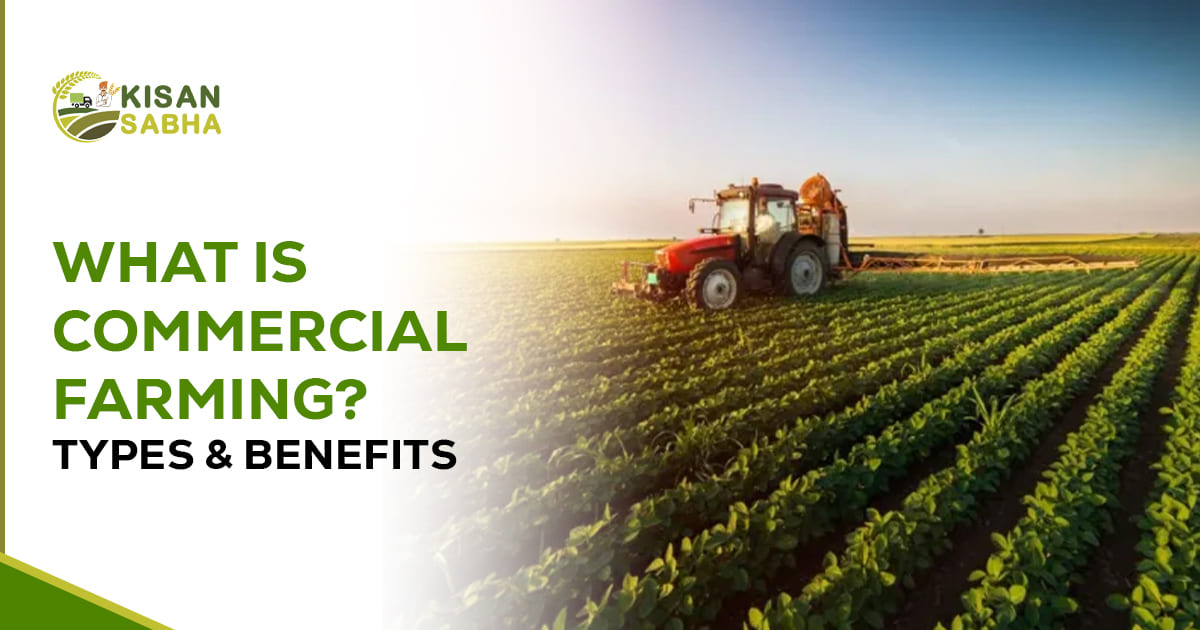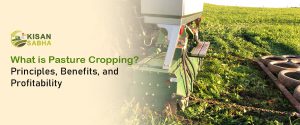Commercial farming is a practice where crops and livestock are cultivated with the intention of selling them as finished goods to gain money.
A significant amount of capital investment is required to grow commercial farming. To create a high yield, it also requires large-scale farms, contemporary technology, inventive machinery, effective irrigation techniques, chemical fertilizers, etc. The major characteristic of commercial farming is the use of contemporary inputs for increased output, such as high-quality fertilizers, herbicides, weed killers, and other things.
The fact that commercial agricultural crops are sold to other nations contributes to their high demand. It is further utilized as a raw material in businesses that produce food. Regional differences in commercial agriculture marketing are also evident.
This farming is mostly done by Indian farmers. In addition, 75% of the rural population is active in commercial farming. Farming business owners in cities acquire land to grow crops, but they rent it to farmers to care for it and grow the crop.
Commercial Farming Types in India
There are various sorts of commercial farming.
- Dairy Farming
- Livestock Ranching
- Mixed Crop and Livestock Farming
- Plantation Farming
- Commercial grain farming
- Commercial Gardening and Fruit Farming
- Mediterranean Agriculture
What is the Difference Between Subsistence and Commercial Farming?
Subsistence farming
Subsistence farming has various features.
- It provides for the personal consumption of farmers. Subsistence farming, in other terms, is where marginal farmers cultivate crops and cattle to meet their family’s needs.
- It is a labor-intensive approach since it necessitates a significant amount of manual effort. By applying manure to the soil, you may enhance output and generate big profits in subsistence farming.
- Indeed this farming employs less contemporary agricultural technology and processes. Farmers in this farming require tiny plots of land and manual labour (who may be family members of the farmers).
- The produce is primarily consumed locally, with little or no excess trading. Moreover, subsistence farming may produce food grains such as wheat and rice, as well as fruits and vegetables.
Commercial Agriculture
Commercial farming has several characteristics.
- Farmers in this sector participate in agribusiness by growing crops and raising animals commercially to maximize financial gains.
- To optimize profitability in agribusiness, farmers invest significantly in modern inputs such as fertilizers, high-yield seeds, and pesticides, ultimately enhancing crop and livestock production.
- Consequently, farmworkers in commercial agriculture utilize a range of modern technologies to enhance agricultural yield, focusing primarily on cultivating cash crops and grains.
Advantages of Commercial Agriculture:
- Enhance crop output: Farmers can enhance crop production by practicing commercial farming. As we all know, farmers in this industry require a huge number of agricultural fields as well as contemporary farming technology. As a result, the output will be higher than using traditional agricultural methods.
- Proper use of machinery and electricity: This farming practice makes proper use of electricity and modern technology to boost the power supply of where this farming practice is located. As a result those residing in areas with access to power enjoy the benefits it provides.
- Simply available to everyone: all agricultural products and items are simply and promptly accessible to all for the development of crop production. It also aids in meeting all needs for emergency supplies.
- Create vacancies: The commercial cultivation practice region creates a lot of work opportunities for the residents. Local employees contribute their labor to ensure the highest agricultural harvest. Instead, they make decent money and can provide a comfortable living for their family members. As a result, it also boosts local economic growth.
- Primary source of raw materials: In addition to generating foreign currency, it aids in the collection of raw materials. As an example, suppose a farmer grows raw fruits like mango and pineapple for business purposes and sells them to confectionary firms to make juice or other drinks.
Conclusion:
Farmers around the world practice agriculture, contributing to the majority of the global food supply. Several countries rely heavily on agriculture to provide the majority of their revenue. This industry provides raw resources to industries as well.
However, commercial farming entails growing crops and raising livestock for resale. Agribusinesses seek to maximize earnings by increasing productivity. Such farms need costly and efficient inputs that yield bigger quantities of product.




